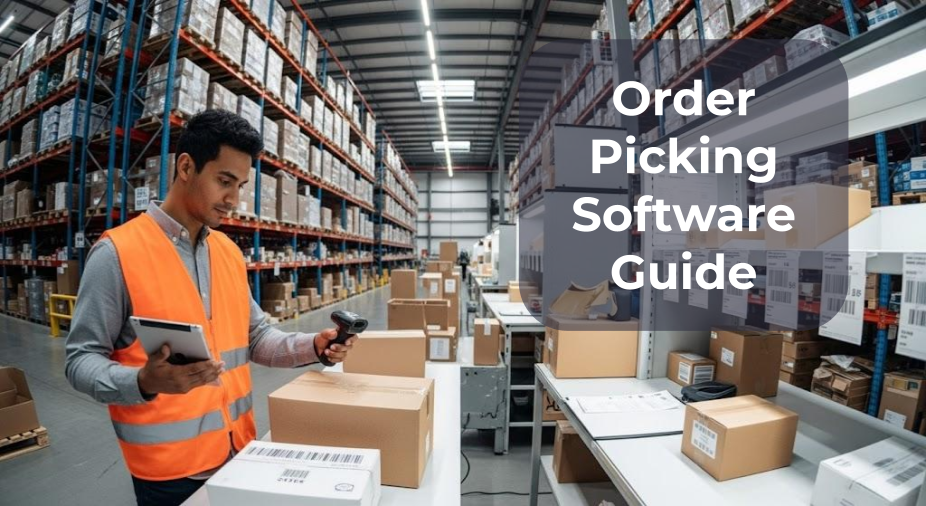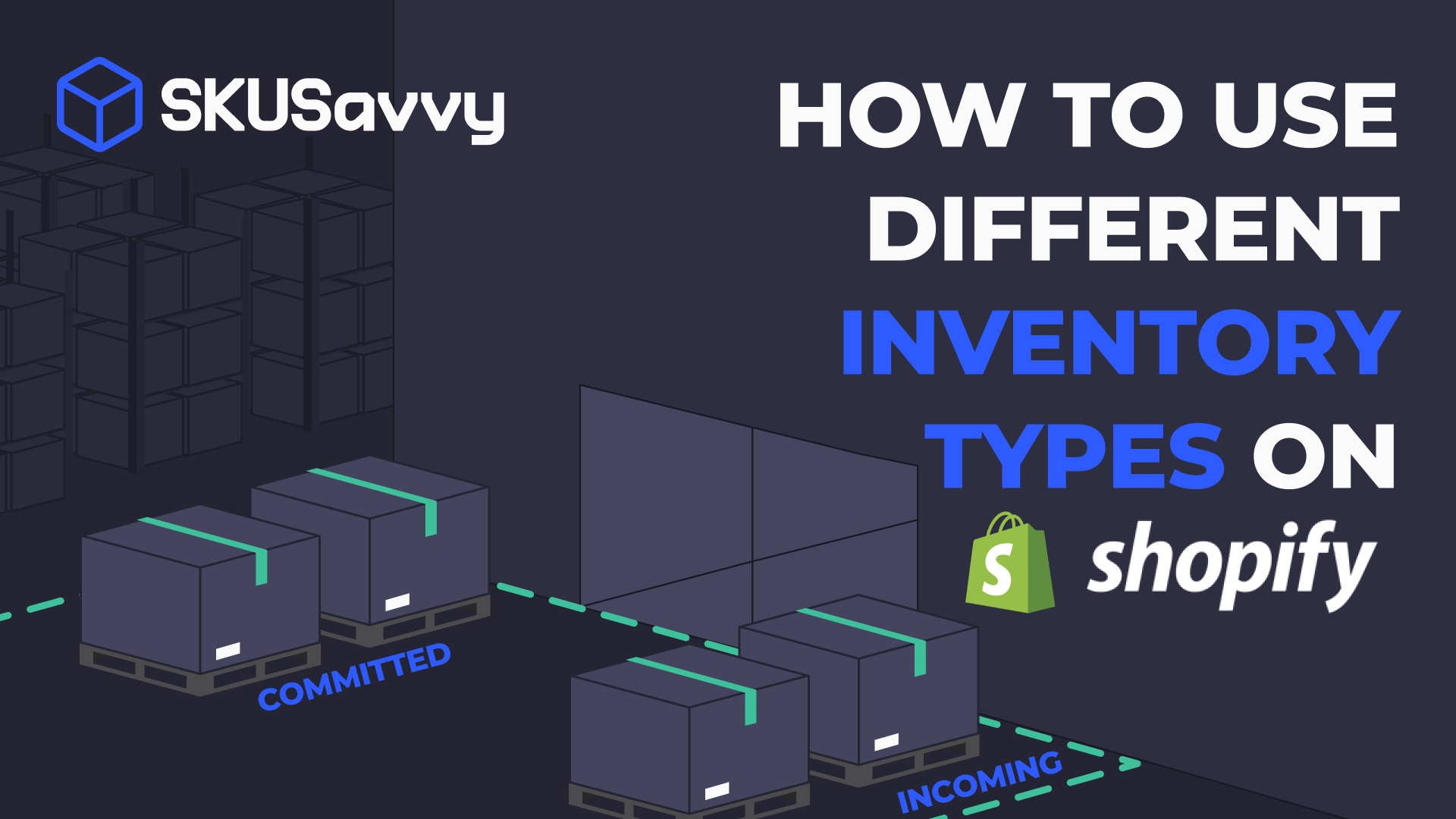8 Enterprise Fulfillment Best Practices for Shopify Plus Merchants
Alex
9/22/2023
Efficiency and customer satisfaction have become paramount to a thriving eCommerce business. However, as these companies grow, so does the complexity of their operations.
Enterprise sellers face unique challenges in ensuring their supply chain, inventory management, and fulfillment processes are smooth and free of hiccups. Shopify Plus has emerged as a trusted ally for these higher-level merchants, providing a robust platform tailored to their needs.
Transforming your order fulfillment process goes beyond mere operational tweaks; it's an involved process that offers a wealth of benefits, from enhanced efficiency and cost-effectiveness to swifter deliveries and superior customer experiences.Explore the SKUSavvy Order Fulfillment Process
Keep reading for tips on optimizing your Shopify Plus fulfillment practices from the experts.
Benefits of Shopify Plus for enterprise merchants
Many eCommerce platforms are now available to accommodate large-scale operations, providing sellers with a variety of options that can quickly become overwhelming. Shopify Plus stands out as a game-changer for enterprise-level businesses. But how does it compare to a custom-built solution?Check Out Shopify Plus
Scalability
One of Shopify Plus's greatest advantages is its scalability. It's built to handle the demands of peak sales seasons, promotional events, and sudden traffic spikes without compromising site speed or user experience.
While scalability is possible with custom solutions, it often demands rigorous testing and additional development to handle sudden traffic surges.
Customization
Shopify Plus offers APIs and advanced tools that facilitate unique and tailored shopping experiences, unlike basic platforms. You can customize every touch point from the shopping cart to checkout processes to match your brand voice and customer needs.
Building functionalities from the ground up offers nearly limitless customization, but it can be time-consuming and may demand frequent updates and patches.
Security
In an age where data breaches can cripple a business, Shopify Plus adheres to the highest standards of payment card security, the PCI DSS, to ensure all transactions remain secure.Not Familiar with PCI DSS? Click here
Security on custom platforms hinges on the expertise of the developers. Regular updates and security patches are essential to thwart threats, which could eat away at your resources.
24/7 support
Imagine having an expert available at all times. Shopify Plus merchants enjoy continuous access to dedicated success managers who are ready to assist with any hiccups or queries.
Meanwhile, support structures for custom platforms depend on in-house teams or contracted agencies. While they can provide dedicated assistance, the speed and availability might vary based on the agreement.
Time and Cost Efficiency
With its pre-built infrastructure tailored to eCommerce, Shopify Plus reduces the time to market. Additionally, its predictable cost structure can be more budget-friendly in the long run.
Custom solutions often entail prolonged development cycles. Plus, initial development, maintenance, and periodic overhauls can inflate costs over time.
Fulfillment best practices for Shopify Plus merchants
When managed effectively, fulfillment operations can transform customer experiences from ordinary to exceptional. However, this process becomes increasingly complicated as your business expands, necessitating a meticulous approach to ensure accuracy, efficiency, and customer satisfaction.
Here are some logistical best practices for larger merchants on Shopify Plus.
1. Multiple verification points
When handling large order volumes, errors can trigger a chain reaction of complications. In turn, these can lead to returns, which result in increased costs, potential restocking challenges, and, most detrimentally, unhappy customers. Remember, even a single negative experience can drive a customer away permanently.
Here are some verification points you can incorporate into your fulfillment process to reduce errors:
Barcode scanning: Incorporate barcode scanning at each order processing stage to act as a validation system. When an item is picked, packed, and then shipped, the scanning process ensures the correct item is processed.
Centralized verification system: Establish a centralized dashboard that highlights order verifications. This provides a birds-eye view of the entire process, allowing for swift corrections if anomalies arise.
Error reporting: Automation can notify operators in real time when a mismatch occurs, which speeds up the rectification process.
2. Automated tracking updates
Customers expect transparency. They want to know where their order is at any given time, from the moment it leaves the warehouse to its arrival at their doorstep.
Integrate a reliable tracking solution into your Shopify Plus store that sends automatic updates to customers at various stages of the shipping process. Ensure your messages are clear, timely, and branded to enhance the experience. You can offer real-time transparency through:
End-to-end tracking: Providing buyers with a tracking ID and continuous status updates reinforces trust and reduces customer anxiety regarding delivery times.
Customized notifications: Personalized, branded messages, from dispatch to out-for-delivery and final arrival, can be a delightful touch point that further enhances your brand’s relationship with consumers.
Feedback loops: Integrating a feedback mechanism within tracking notifications can reveal valuable insights into the customer's delivery experience.
3. Real-time inventory updates
Overselling can tarnish a brand's reputation and lose consumer trust. To prevent that nightmare, embrace advanced inventory management solutions that integrate seamlessly with Shopify Plus. Real-time syncing across all sales channels, warehouse stock counts, and timely reorder alerts ensure you deliver on all your promises. Tools and practices that keep you informed include:
Unified inventory system: A system to prevent stock discrepancies across all sales channels
Threshold alerts: Proactively address potential stock shortages
Demand forecasting: Predictive tools to align stock with anticipated demand
4. Efficient packaging
Well-designed packaging protects the product, reduces shipping costs, and enhances your brand image. Aim for efficient use of materials to minimize weight and volume, as that can significantly save on shipping expenses. This is especially beneficial for businesses that ship large volumes of items. The following factors can help you tackle this crucial branding aspect:
Material research: Discover materials that combine protection with sustainability.
Eco-friendly initiatives: Appeal to the green consumer by reducing your carbon footprint.
Unboxing experience: Revamp your unboxing experience to make opening the package an enjoyable event in itself.
Consider collaborating with a logistics partner like MyFBAPrep to audit your current packaging strategy. These service providers are experts in identifying areas of waste, potential cost savings, and opportunities to improve packaging aesthetics.Visit our logistics partner MyFBAPrep to help evaluate your current packaging strategy
5. Seamless integration with third-party logistics (3PLs)
3PLs can handle large order volumes, offer faster shipping times, and reduce overhead costs. Find a 3PL with a positive eCommerce fulfillment track record. Ensure they can integrate with Shopify Plus, as well as offer real-time data access and performance metrics. To ensure a harmonious partnership, employ best practices like:
Compatibility checks: Ensure real-time data flow between your 3PL and Shopify Plus.
Performance audits: Periodically assess your operations to ensure consistent service quality.
Diversification: Engage multiple 3PLs for flexibility and regional expertise.
6. Continuous analysis and optimization
The eCommerce landscape is dynamic; what works today may not be optimal tomorrow. Invest in analytics tools to derive insights from your fulfillment data and keep ahead of fluctuations. Regular reviews help spot trends, bottlenecks, and inefficiencies. Set up monthly or quarterly reviews to refine your fulfillment process for greatest efficiency. Here's how to keep your fulfillment process agile:
Dedicated analytics team: Keep a close eye on all crucial fulfillment metrics.
Trend analysis: Stay on top of changes by knowing the evolving market dynamics.
Feedback integration: Internal and external feedback can spotlight areas in need of improvement.
7. Returns and exchange management
A hassle-free returns process can increase customer loyalty and trust. You can develop explicit and easy-to-follow return policies with:
Transparent verbiage: Eliminate surprises by clearly stating the terms for returns.
Efficient return merchandise authorization systems: Automate processes to facilitate speedy returns.
Return analytics: Dive deep into your data to rectify recurring product or delivery issues.
8. Preventative measures for damage
Damaged goods result in returns, added costs, and disappointed customers. Regularly review and update packaging methods and materials to prevent damage during storage and shipping. Ensure products are securely packed, especially fragile items, and buy shipment insurance for high-value or delicate items. You can further prevent harm through:
Quality assurance: Simulate transit conditions to test the durability of packaging solutions.
Training: Empower your ground staff with the latest packing best practices.
Insurance options: These offer extra peace of mind for premium or fragile deliveries.
FAQs on Enterprise Fulfillment
What's the difference between basic Shopify and Shopify Plus?
Basic Shopify is designed for small to medium-sized businesses, whereas Shopify Plus is tailored to high-volume merchants and enterprises. The latter comes with advanced features, dedicated support, and scalability not accessible in the basic plan.
Is Shopify Plus worth the extra cost?
If you're an enterprise-level merchant experiencing or anticipating high growth, Shopify Plus's upper-tier features and scalability can match your needs and may be a valuable investment.
Does Shopify Plus handle fulfillment?
While Shopify Plus provides the tools and integrations for efficient fulfillment, it doesn’t take on the physical process. However, it easily integrates with numerous third-party fulfillment providers for seamless logistics.Explore the tools and integrations in Shopify Plus
Can Shopify Plus automatically fulfill orders?
You can set up Shopify Plus to mark orders as fulfilled using its automation tools. However, the merchant or a third-party fulfillment partner typically handles the physical packing and shipping.
Wrapping up — Mastering fulfillment for Shopify Plus merchants
In the fiercely competitive eCommerce market, every detail, from the choice of platform to the intricacies of fulfillment, directly impacts a brand's trajectory. While Shopify Plus lays a strong foundation for enterprise merchants, it's the nuanced back-end operations like seamless integrations and strategic packaging that amplify a business. Merchants who succeed in optimizing these finer points won't only keep pace — they’ll set it, positioning themselves a cut above the competition.
About the Author
Rachel Go is the marketing director of MyFBAPrep, an eCommerce warehouse network for Amazon aggregators, enterprise brands, and top Amazon sellers. Operating a global network of more than 100 warehouses and 85 million square feet of warehousing space, MyFBAPrep offers a full suite of 3PL services, including Amazon wholesale and private label, direct-to-consumer (DTC) fulfillment, and B2B retail. Powered by their SaaS technology platform, Preptopia™, sellers gain access to unified billing, analytics, business intelligence reporting tools, and real-time inventory updates across multiple warehouses in the network. The company provides FBA Prep automation, modern robotics item picking, and a dedicated account management team. Based in Coral Springs, Florida, MyFBAPrep moves over $1 billion in gross merchandise value (GMV) and processes over 10 million units annually.





